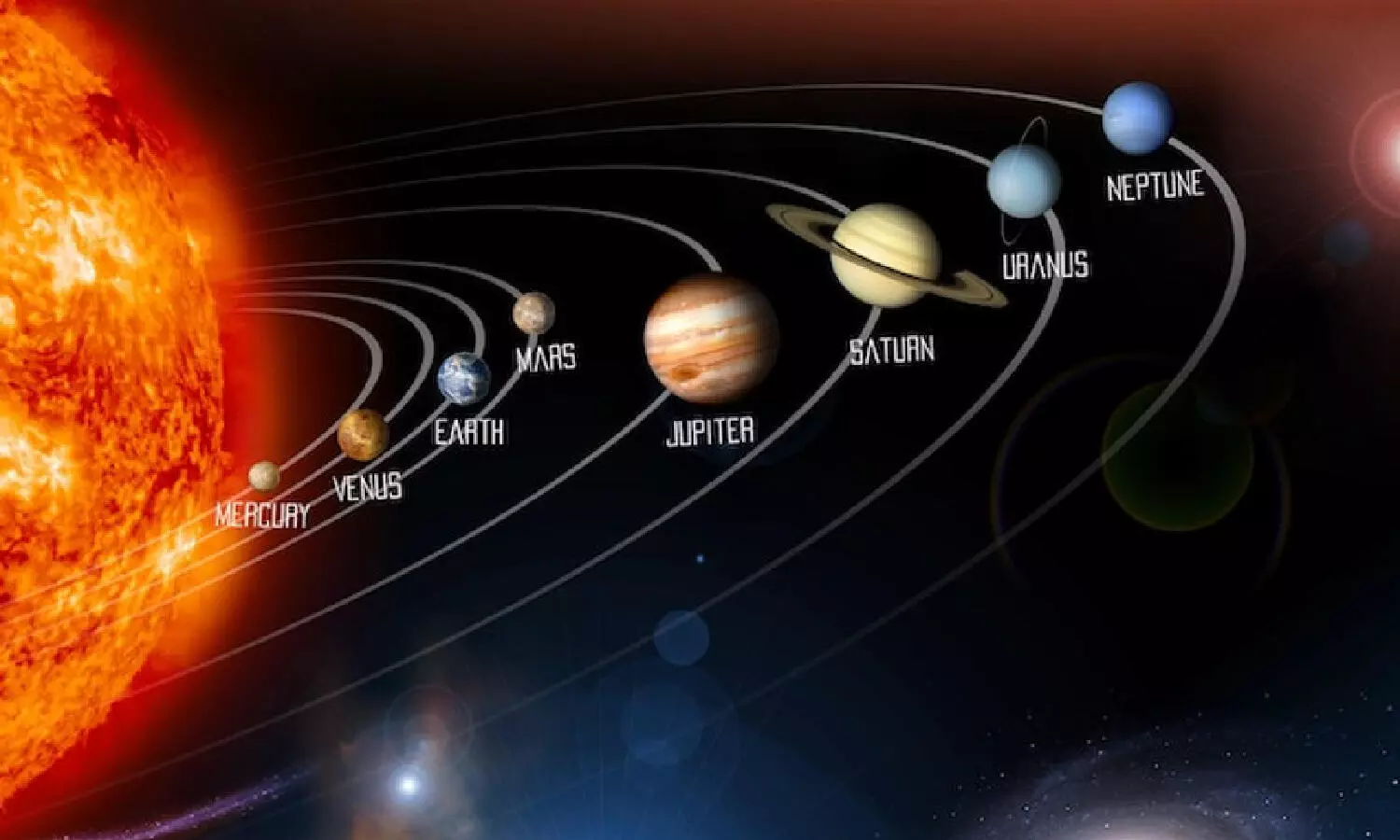‘Great planetary alignment’ on Jan 25? Hype overstated; no perfect stack
Six planets only will be visible in January’s night sky but they are not perfectly stacked on one side of the Sun according to Planetary society of India
By Anoushka Caroline Williams
Planet Parade: NASA says is misleading, Planets won't appear in a line as interpreted by many in media
Hyderabad: Rumours of a ‘great planetary alignment’ on January 25 have taken social media by storm, with claims that all eight planets will line up on one side of the Sun and be visible in the night sky. However, experts have dismissed these claims as inaccurate.
“While alignments of planets may appear exciting, they are not as rare as viral videos claim. Planetary alignment occurs periodically due to the predictable nature of planetary orbits, and larger alignments involving more planets happen every few decades but are not ‘once-in-a-lifetime’ events.” - read a statement by the Planetary Society of India.
How exactly will be the planets line up?
Mercury will remain in the morning sky in January and will only move into the evening sky by February. But by that time, Saturn and Neptune will have sunk too low on the horizon to be easily visible.
Planets in January’s night sky
Despite the debunked myth, January offers a rare opportunity to observe a stunning planetary lineup. Mars, Jupiter, Saturn and Venus are bright enough to see with the naked eye. Uranus and Neptune are also present but require optical aids like binoculars or telescopes.
Dr Nirali Aryan, an astronomer, explained, “This combination of getting everything visible at the same time is what makes January special. Usually, you need to wait for some planets to rise or set, but right now, they’re all there.”
The best time to catch the alignment is about 90 minutes after sunset. Stargazers should find a dark, clear spot for optimal viewing.
Understanding planetary alignments
Planets in our solar system orbit the Sun along a flat plane called the ecliptic, giving the illusion of alignment when viewed from Earth. Dr Aryan emphasised, “The planets always travel in a line across the sky due to this orbital plane.”
However, these alignments are more about perspective than a true cosmic lineup. While the planets appear in a straight line from Earth’s point of view, they are not physically aligned in space.
Using tools for spotting faintly visible planets
Uranus and Neptune, the faintest of the visible planets this month, can be found along the same line as the brighter planets. Uranus is located near the Pleiades star cluster and is easier to spot with binoculars under dark skies. Neptune, dimmer still, will appear close to Venus on January 29 and 30.
“Neptune will be just a few moon-widths away from Venus, making it easier to locate with a telescope,” Dr Aryan suggested.
Why winter is perfect for stargazing
Winter skies offer prime stargazing conditions due to cold air holding less moisture, which reduces distortion. “When the jet stream isn’t active and temperature gradients are minimal, the skies become still, providing clearer views,” Dr Aryan explained. She advised stargazers to bundle up and avoid touching cold metal equipment with bare skin.
What celestial events lie ahead
This planetary alignment will continue into early February, with gradual changes in the positions of the planets. “If you observe night after night, you’ll notice Venus and Saturn drifting apart, giving a visual representation of the motion within our solar system,” said Dr Aryan.
While the viral claims of a perfect planetary lineup on January 25 may not hold true, this month still provides a remarkable celestial show worth stepping outside for.